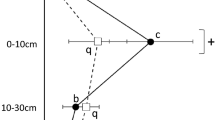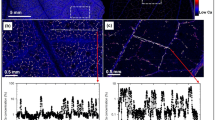Abstract
Flowering dogwood (Cornus florida L.) is an important understory tree species that is thought to enhance ecological calcium (Ca) cycling and soil Ca availability through high foliar Ca concentrations and rapid leaf litter decomposition. Calcium is an essential macronutrient in plants, important for stabilizing cell walls and plasma membranes. It is also an ubiquitous intracellular second messenger, helping plants sense and physiologically respond to numerous environmental cues. Analyses of total foliar Ca can be dominated by chemically sequestered Ca, which is not readily available for cellular processes. Thus, analyses of specific foliar partitions of Ca are more closely tied to Ca-dependent processes such as signal transduction. To further develop our understanding of the role of flowering dogwood in ecological Ca cycling, we evaluated foliar Ca partitioning via sequential acidic extractions. We compared Ca partitioning in flowering dogwood to that of white oak (Quercus alba L.), and found significantly more labile Ca in dogwood and a much greater proportion of Ca sequestration in oak. We compared foliar Ca partitioning in white oak at sites with dogwood to that of oaks at dogwood-absent sites, and found significantly greater labile Ca in oaks where dogwood was present. We also investigated the phenological patterns of Ca partitioning and sequestration in flowering dogwood foliage, and found preferential partitioning of Ca into the more labile and physiologically accessible pools throughout the growing season, with minimal Ca sequestration. This work helps elucidate the mechanisms and consequences associated with Ca cycling by flowering dogwood in forested systems.





Similar content being viewed by others
References
Blatt MR (2000) Ca2+ signalling and control of guard-cell volume in stomatal movements. Curr Opin Plant Biol 3:196–204
Borer CH, Schaberg PG, DeHayes DH, Hawley GJ (2004) Accretion, partitioning and sequestration of calcium and aluminum in red spruce foliage: implications for tree health. Tree Physiol 24:929–939
Borer CH, Schaberg PG, DeHayes DH (2005) Acidic mist reduces foliar membrane-associated calcium and impairs stomatal responsiveness in red spruce. Tree Physiol 25:673–680
Borer CH, Hamby MN, Hutchinson LH (2012) Plant tolerance of a high calcium environment via foliar partitioning and sequestration. J Arid Environ 85:128–131
Chellemi DO, Britton KO (1992) Influence of canopy microclimate on incidence and severity of dogwood anthracnose. Can J Bot 70:1093–1096
Fink S (1991) The micromorphological distribution of bound calcium in needles of Norway spruce [Picea abies (L.) Karst.]. New Phytol 119:33–40
Franceschi VR, Nakata PA (2005) Calcium oxalate in plants: formation and function. Annu Rev Plant Biol 56:41–71
Graveland J, van der Wal R, van Balen JH, van Noordwijk AJ (1994) Poor reproduction in forest passerines from decline of snail abundance on acidified soils. Nature 368:446–448
Hiers JK, Evans JP (1997) Effects of anthracnose on dogwood mortality and forest composition of the Cumberland Plateau (USA). Conserv Biol 11:1430–1435
Holzmueller EJ, Jose S, Jenkins MA (2007) Influence of calcium, potassium and magnesium on Cornus florida L. density and resistance to dogwood anthracnose. Plant Soil 290:189–199
Irving HR, Gehring CA, Parish RW (1992) Changes in cytosolic pH and calcium of guard cells precede stomatal movements. Proc Nat Acad Sci 89:1790–1794
Jenkins MA, Jose S, White PS (2007) Impacts of an exotic disease and vegetation change on foliar calcium cycling in Appalachian forests. Ecol Appl 17:869–881
Knight H (2000) Calcium signaling during abiotic stress in plants. Int Rev Cytol 195:269–324
Levine A, Pennell RI, Alvarez ME, Palmer RA, Lamb C (1996) Calcium-mediated apoptosis in a plant hypersensitive disease resistance response. Curr Biol 6:427–437
Libert B, Franceschi VR (1987) Oxalate in crop plants. J Agric Food Chem 35:926–938
MacRobbie EAC (2000) ABA activates multiple Ca2+ fluxes in stomatal guard cells, triggering vacuolar K+(Rb+) release. Proc Nat Acad Sci 97:12361–12368
Marschner P (2012) Mineral nutrition of higher plants. 3rd edn. Academic Press, San Diego
McLemore BF (1990) Cornus florida L. In: Burns RM, Honkala BH, tech. coords. (eds). Silvics of North America: 2. Hardwoods. Agriculture Handbook 654, vol 2. US Department of Agriculture, Forest Service, Washington, DC, pp 554–564
Monroy AF, Sarhan F, Dhindsa RS (1993) Cold-induced changes in freezing tolerance, protein phosphorylation, and gene expression: evidence for a role of calcium. Plant Physiol 102:1227–1235
Oswalt CJ, Oswalt SN, Woodall CW (2012) An assessment of flowering dogwood (Cornus florida L.) decline in the eastern United States. Open J For 2:41–53
Ough CS, Caputi A, Groat M (1979) A rapid colorimetric calcium method. Am Enol Vitic 30:58–60
Pandey S, Tiwari SB, Upadhyaya KC, Sopory SK (2000) Calcium signaling: linking environmental signals to cellular functions. Crit Rev Plant Sci 19:291–318
Ray Sarkar BC, Chauhan UPS (1967) A new method for determining micro quantities of calcium in biological materials. Anal Biochem 20:155–166
Richardson AD, Denny EG, Forbush JA, Siccama TG, Hunter KS (2001) Differential aluminum and calcium concentrations in the tissues of ten Cornus species. J Torrey Bot Soc 128:120–127
Rogers R (1990) Quercus alba L. In: Burns RM, Honkala BH, tech. coords (eds). Silvics of North America: 2. Hardwoods. Agriculture Handbook 654, vol 2. US Department of Agriculture, Forest Service, Washington, DC, pp 1181–1198
Rossell IM, Rossell CR, Hining KJ, Anderson RL (2001) Impacts of dogwood anthracnose (Discula destructiva Redlin) on the fruits of flowering dogwood (Cornus florida L.): implications for wildlife. Am Midl Nat 146:379–387
Schaberg PG, DeHayes DH, Hawley GJ, Strimbeck GR, Cumming JR, Murakami PF, Borer CH (2000) Acid mist and soil Ca and Al alter the mineral nutrition and physiology of red spruce. Tree Physiol 20:73–85
Tate, RJ (1978) Soil Survey of Chattooga, Floyd, and Polk Counties, Georgia. USDA Soil Conservation Service and Forest Service, in cooperation with University of Georgia, College of Agriculture Agricultural Experiment Stations publication
Thomas WA (1969) Accumulation and cycling of calcium by dogwood trees. Ecol Monograph 39:101–120
USDA Forest Service (2007) Forest Inventory and Analysis National Core Field Guide, vol 1. Field data collection procedures for Phase 2 plots. Version 4.0, October 2007. USDA Forest Service publication
Whittaker RH (1952) A study of summer foliage insect communities in the Great Smokey Mountains. Ecol Monograph 22:1–44
Williams CE, Moriarty WJ (1999) Occurrence of flowering dogwood (Cornus florida L.), and mortality by dogwood anthracnose (Discula destructiva Redlin), on the northern Allegheny Plateau. J Torrey Bot Soc 126:313–319
Xu H, Heath MC (1998) Role of calcium in signal transduction during the hypersensitive response caused by basidiospore-derived infection of the cowpea rust fungus. Plant Cell 10:585–597
Acknowledgments
We thank Paul Schaberg, Ron Miller, Mary Castro, and two anonymous reviewers for their helpful suggestions on earlier drafts of this manuscript. Michelle Hamby, Mary Castro, Rachel Leslie, Amber Mooney, Brittney Nelson and Lesley Lane provided excellent technical support in field collections and laboratory procedures. The Synovus Sophomore Scholarship program, the School of Mathematical and Natural Sciences Development of Undergraduate Research program, Student Work, and the Biology Department at Berry College provided financial support for this work.
Author information
Authors and Affiliations
Corresponding author
Additional information
Communicated by R. D. Guy.
Rights and permissions
About this article
Cite this article
Borer, C.H., Sapp, S.G. & Hutchinson, L.H. Flowering dogwood (Cornus florida L.) as mediator of calcium cycling: new insights are revealed by analysis of foliar partitioning. Trees 27, 841–849 (2013). https://doi.org/10.1007/s00468-012-0838-9
Received:
Revised:
Accepted:
Published:
Issue Date:
DOI: https://doi.org/10.1007/s00468-012-0838-9




